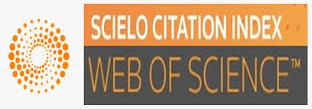Influencia de antigripales con antihistamínicos de primera generación en el desempeño de pilotos de aviación
DOI:
https://doi.org/10.22335/rlct.v11i3.939Palabras clave:
antihistamínico, desempeño, pilotos, simulador de vueloResumen
Según diferentes estudios realizados por la Administración Federal de Aviación de Estados Unidos, se han encontrado posibles relaciones de causalidad entre accidentes fatales y el consumo de antihistamínicos de primera generación. El objetivo fundamental de este trabajo es analizar mediante un estudio con pilotos, como el consumo de antigripales de venta libre afecta el desempeño de estos. Este experimento se realizó con un simulador de vuelo estático. Se contaron con 8 pilotos de aviación con más de 150 horas de vuelo de experiencia para realizar las pruebas específicas en diferentes niveles de dificultad (básico y avanzado). La prueba ANOVA confirmó que el consumo de antihistamínicos de primera generación influye en el rendimiento del piloto (p<0.05). A través de la observación, se encontró que se reducen las capacidades de recordar las actividades básicas y las capacidades de reaccionar en una emergencia en vuelo.
Descargas
Referencias
Australian Transport Safety Bureau. (2006). Accidents and Incidents Involving Alcohol and Drugs in Australian Civil Aviation, (January 1975), 1–24.
Causse, M., Dehais, F., & Pastor, J. (2011). Executive Functions and Pilot Characteristics Predict Flight Simulator Performance in General Aviation Pilots. The International Journal of Aviation Psychology, 21(3), 217–234. http://dx.doi.org/10.1080/10508414.2011.582441
Chaturvedi, A. K., Craft, K. J., Hickerson, J. S., Rogers, P. B., & Soper, J. W. (2013). Toxicological findings in fatally injured pilots of 979 amateur-built aircraft accidents. Aviation Space and Environmental Medicine, 84(2), 134–141. http://dx.doi.org/10.3357/ASEM.3285.2013
Færevik, H., & Reinertsen, R. E. (2003). Effects of wearing aircrew protective clothing on physiological and cognitive responses under various ambient conditions. Ergonomics, 46(8), 780–799. http://dx.doi.org/10.1080/0014013031000085644
Gildea, K. M., Hileman, C. R., & Paskoff, L. N. (2018). Antihistamines and Fatal Aircraft Mishaps in Instrument Meteorological Conditions, (July).
Helmreich, R. L. (1997). Managing Human Error in Aviation. Scientific American, 276(5), 62–67. https://doi.org/10.1038/scientificamerican0597-62
Kapur, N., Parand, A., Soukup, T., Reader, T., & Sevdalis, N. (2016). Aviation and healthcare: a comparative review with implications for patient safety. JRSM Open, 7(1), 205427041561654. http://dx.doi.org/10.1177/2054270415616548
Kılıç, M., Uyar, A., & Karaman, A. S. (2019). What impacts sustainability reporting in the global aviation industry? An institutional perspective. Transport Policy, 79(April), 54–65. http://dx.doi.org/10.1016/j.tranpol.2019.04.017
Landman, A., Groen, E. L., van Paassen, M. M. (René., Bronkhorst, A. W., & Mulder, M. (2017). The Influence of Surprise on Upset Recovery Performance in Airline Pilots. International Journal of Aerospace Psychology, 27(1–2), 2–14. http://dx.doi.org/10.1080/10508414.2017.1365610
Li, J., Tian, Y., Ding, L., Zou, H., Ren, Z., Shi, L., … Wang, N. (2015). Simulating extreme environments: Ergonomic evaluation of Chinese pilot performance and heat stress tolerance. Work, 51(2), 215–222. http://dx.doi.org/10.3233/WOR-141842
Lindseth, G. N., Lindseth, P. D., Jensen, W. C., Petros, T. V., Helland, B. D., & Fossum, D. L. (2011). Dietary effects on cognition and pilots’ flight performance. International Journal of Aviation Psychology, 21(3), 269–282. http://dx.doi.org/10.1080/10508414.2011.582454
Lopez, N., Previc, F. H., Fischer, J., Heitz, R. P., & Engle, R. W. (2012). Effects of sleep deprivation on cognitive performance by United States Air Force pilots. Journal of Applied Research in Memory and Cognition, 1(1), 27–33. http://dx.doi.org/10.1016/j.jarmac.2011.10.002
Martínez-Cuadrón, D., Gil, C., Serrano, J., Rodríguez, G., Pérez-Oteyza, J., García-Boyero, R., … Montesinos, P. (2019). A precision medicine test predicts clinical response after idarubicin and cytarabine induction therapy in AML patients. Leukemia Research, 76(November 2018), 1–10. http://dx.doi.org/10.1016/j.leukres.2018.11.006
Mullol, J., Valero, A., Alobid, I., Bartra, J., Navarro, A., Chivato, T., … Bousquet, J. (2008). Allergic Rhinitis and its impact on asthma update (ARIA 2008). The perspective from Spain. J Investig Clin Immunol, 18(5), 327–334. http://dx.doi.org/10.1111/j.1398-9995.2007.01620.x
Paśko, P., Rodacki, T., Domagała-Rodacka, R., Palimonka, K., Marcinkowska, M., & Owczarek, D. (2017). Second generation H1 - antihistamines interaction with food and alcohol—A systematic review. Biomedicine and Pharmacotherapy, 93(2017), 27–39. http://dx.doi.org/10.1016/j.biopha.2017.06.008
Petruzzello, S. J., Gapin, J. I., Snook, E., & Smith, D. L. (2009). Perceptual and physiological heat strain: Examination in firefighters in laboratory- and field-based studies. ERGONOMICS. http://dx.doi.org/10.1080/00140130802550216
Qidwai, J. C., Watson, G. S., & Weiler, J. M. (2002). Sedation, cognition, and antihistamines. Current Allergy and Asthma Reports, 2(3), 216–222. http://dx.doi.org/10.1007/s11882-002-0022-1
Reglamentos Aeronáuticos de Colombia," Aeronaútica Civil, Bogotá-Colombia, 2018. (n.d.). R A C 215.
Reglamentos Aeronáuticos de Colombia," Aeronaútica Civil, Bogotá-Colombia, 2018. (2018). R A C 13.
Rogers, P., Hileman, C., Salazar, G., Cliburn, K., Paskoff, L., Hathaway, W., … Tejera Villalaz, V. H. (2017). Pilots using selective serotonin reuptake inhibitors compared to other fatally injured pilots. Accident Analysis and Prevention, 107(June), 86–91. http://dx.doi.org/10.1016/j.aap.2017.07.023
Ud-Din, S., & Yoon, Y. (2018). Analysis of Loss of Control Parameters for Aircraft Maneuvering in General Aviation. Journal of Advanced Transportation, 2018, 1–19. http://dx.doi.org/10.1155/2018/7865362
Wang, J., Helder, L., Shao, J., Jansen, J. A., Yang, M., & Yang, F. (2019). Encapsulation and release of doxycycline from electrospray-generated PLGA microspheres: Effect of polymer end groups. International Journal of Pharmaceutics, 564(April), 1–9. http://dx.doi.org/10.1016/j.ijpharm.2019.04.023
Wilson, G. F., Caldwell, J. A., & Russell, C. A. (2007). Performance and psychophysiological measures of fatigue effects on aviation related tasks of varying difficulty. International Journal of Aviation Psychology, 17(2), 219–247. http://dx.doi.org/10.1080/10508410701328839
Winter, S. R., Rice, S., Rains, T., & Milner, M. (2017). A longitudinal study on the alteration of consumer perceptions and the use of pilot medication. Journal of Air Transport Management, 59, 100–106. http://dx.doi.org/10.1016/j.jairtraman.2016.12.004
Descargas
Publicado
Número
Sección
Licencia
Derechos de autor 2019 Revista Logos Ciencia & Tecnología

Esta obra está bajo una licencia internacional Creative Commons Atribución 4.0.
Esta revista provee acceso libre e inmediato a su contenido (https://creativecommons.org/licenses/by-nc-nd/4.0/), bajo el principio de hacer disponible gratuitamente la investigación al público y apoyar a un mayor intercambio de conocimiento global.
































